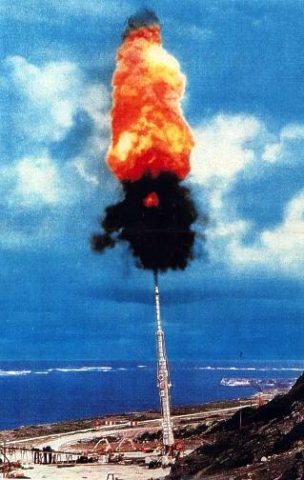Sunday, March 10, 2013
Project HARP
Transportation from the ground to low Earth orbit is expensive. Why not make it cheaper by firing things from Earth into space Jules Verne-style with a giant cannon? This was the idea behind a joint US-Canadian program called Project HARP, which you can read more about here:
Project HARP
HARP in this case is a rather uninspired acronym for "High Altitude Research Project," which gives the program the unfortunately redundant name "Project High Altitude Research Project." Sloppy English aside, the engineering was sound, and resulted in the installation of a 40-meter-long modified naval gun in Barbados capable of accelerating a 180 kilogram payload from zero to 3.6 kilometers per second between breech and barrel. The premise was to test ballistic missile reentry vehicles by sending them high above the atmosphere and back to the ground without requiring rockets. HARP wound up setting a record for the highest altitude ever reached by gunshot, about 112 miles above Earth's surface, and was quickly cancelled thereafter.
Gerald Bull, the chief engineer on the Canadian side, was a big believer in guns' ability to decrease launch costs. While HARP's muzzle velocity was less than half the speed needed to reach LEO, he had plans to build light-gas guns using explosively-compressed hydrogen or helium to achieve even higher launch speeds. Unfortunately the only nation interested in funding such a device was Iraq, and Bull was murdered under ambiguous circumstances (that totally have nothing to do with the Mossad, according to the Mossad) after offering to programmatic help to Saddam Hussein's regime.
Reaching such high speed so quickly so low in the atmosphere puts tremendous acceleration, aerodynamic, and thermal loads on the vehicle, and much of the launch energy is wasted by creating an arc of superheated air along the spacecraft's trajectory low in the atmosphere There's zero potential for human spaceflight here, and I think the extra hassles placed on the payload by the insane launch loads render it infeasible for robotic systems as well. Still, the cost of orbital transport is unacceptably high today, and if there's potential here I'm all for it being pursued.
Subscribe to:
Post Comments (Atom)

No comments:
Post a Comment